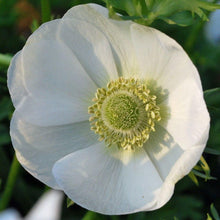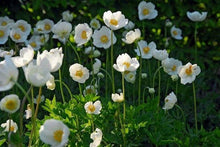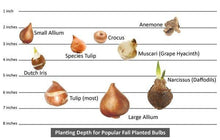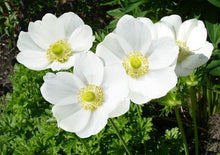<p>Native to the Mediterranean, coronaria anemones, or poppy anemones (sometimes called windflowers), like a sparkling jewel, the Anemone coronaria 'Hollandia' features masses of cheerful scarlet-red poppy-like flowers adorned with a dark button center. Naturalizing easily, these charming plants will make a stunning effect planted en masse in the garden border or container and will provide weeks of constant cut flowers. Light: full sun Soil: light, loamy, sandy Rate of growth: average (takes about 2 months to sprout and 3 to flower) Flowering period: May to July Hardiness: fully hardy Height: 10-20 cm Use: Containers, rock gardens, woodlands, long-lasting bouquets Climate: USDA Zones 7 - 10 as perennials. Good for annuals anywhere. Warning: Can be toxic to dogs and cats.</p>
<p> </p>
<p>CARE</p>
<p>Choose a spot where they can be left undisturbed so they can naturalize and spread. Pre-soak the tubers overnight in cool water before planting (it doesn't matter which way up) 6cm deep and 12cm apart from September to November, or (for later flowers in spring), February to April. Plant around 75 corms per square meter. Feed (fertilize) every couple of weeks with liquid seaweed. Keep soil dry during dormancy and provide a light mulch in late summer/early autumn. Corms are planted 6 inches (15 cm) apart, with 5 rows per bed. During cold stretches, when temps dip below freezing, cover the plants with a layer of frost cloth. Anemones normally start to flower about three months after planting. Fall-planted corms bloom in early spring and continue steadily for eight to 10 weeks. Protect with a cloche or dry mulch against extreme winter weather. Avoid excessively wet conditions when dormant. If you cut flowers early, tubers will put their energy into producing a new stem.</p>
<p> </p>
<p> </p>
<p>CARE</p>
<p>Choose a spot where they can be left undisturbed so they can naturalize and spread. Pre-soak the tubers overnight in cool water before planting (it doesn't matter which way up) 6cm deep and 12cm apart from September to November, or (for later flowers in spring), February to April. Plant around 75 corms per square meter. Feed (fertilize) every couple of weeks with liquid seaweed. Keep soil dry during dormancy and provide a light mulch in late summer/early autumn. Corms are planted 6 inches (15 cm) apart, with 5 rows per bed. During cold stretches, when temps dip below freezing, cover the plants with a layer of frost cloth. Anemones normally start to flower about three months after planting. Fall-planted corms bloom in early spring and continue steadily for eight to 10 weeks. Protect with a cloche or dry mulch against extreme winter weather. Avoid excessively wet conditions when dormant. If you cut flowers early, tubers will put their energy into producing a new stem.</p>
<p> </p>








